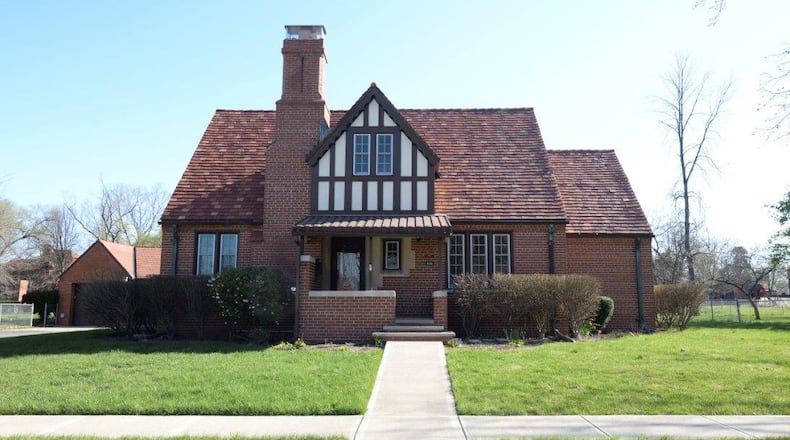“I find it difficult to believe that the amount of over $2.4 million per home is an accurate number,” Beavercreek resident Joy Brailey said in an email to a Dayton Daily News reporter. “Yes, those lovely historic homes are worth saving! But surely not at that astronomical cost?”
The Dayton Daily News asked the Air Force the same question.
Mark Kincade, a spokesman for the Air Force Installation and Mission Support Center, responded this way:
“The primary cost drivers include lack of available skilled labor as well as labor cost increases (carpentry, roofing, mechanical, electrical),” Kinkade said in an email. “Also, the current market environment has driven increases in material prices such as lumber, copper and conduit. Additionally, clay tile roofing and high-grade custom windows necessary to maintain the aesthetic consistency of the existing historic architecture of the neighborhood and to meet State Historic Preservation Office requirements have contributed to increased costs. Contractors also stated their concerns regarding the risks of increasing materials pricing and labor (skilled and unskilled) shortages, and assumed pricing increases to account for this risk.”
“Can I get one of those houses?” joked Tom Schatz, president of the Washington, D.C.-based Citizens Against Government Waste, when he was asked about the project.
“It seems like a lot of money,” Schatz said in an interview.
According to Zillow, the most expensive single-family area home on the Dayton-area market was 7067 Meeker Commons Lane in Butler Twp., listed for nearly $1.4 million in mid-February.
The average sale price of a home in Dayton was $110,000 in January, up 19.1% since last year, according to the web site Redfin.com. The average sale price per square foot in Dayton was $82, up 20.6% since last year, the site said.
At an even $100 per square foot, a big spender in the Miami Valley could get a 24,000-square foot home for $2.4 million, Schatz noted.
“It’s a common-sense response to think that is an excessive amount of money,” he said of the Air Force project.
It’s a “common occurrence” for projects built on bases to cost three times what they would cost off base, said John Morris, president and chief executive of the Ohio Valley Associated Builders and Contractors.
“Unfortunately, our government at the federal and state of Ohio levels places unnecessary burdens on contractors which drive up the cost of projects in return for nothing more than reduced competition and a waste of taxpayer dollars,” Morris said.
Morris said this is the time to eliminate Davis Bacon and “prevailing wage” laws. Davis Bacon stipulates that contractors must pay workers no less than locally prevailing wages and benefits comparable to similar projects in a given area.
After a protest was filed with the U.S. Government Accountability Office by construction joint venture Vazquez-RWB JV LLC, the government suspended the contract awarded to Messer earlier in February.
“The contracting officer made the determination to stop performance associated with this contract, until the protest is resolved which may include corrective action,” Corps spokeswoman Katelyn Newton said. In other words, the contract may be re-bid.
The Dayton Daily News has asked Kinkade for an longer phone interview on the topic. The newspaper also asked for information about the contract under a Freedom of Information Act request to the Army Corps of Engineers, a request the Corps acknowledged.
The original contract was $70.8 million total for whole-house interior and exterior work of 29 on-base homes of residential/commercial type construction. Many of the homes appear to be slated for officers and higher-ranking officials.
In response to the initial filing of the GAO protest, Messer told the Dayton Daily News: “Messer is aware of a protest filed with the GAO regarding a contract we were awarded to renovate housing at Wright-Patterson Air Force Base, where we’ve performed work for more than 80 years. We recognize the historical significance of this project and are honored to have been selected as the general contractor. Messer responded to the detailed expertise and cost qualifications that the government requested in its RFP (request for proposal).”
Added Morris: “Messer is an outstanding contractor, recognized as a national top performer for quality and ethics. They bid this project at a competitive rate. Put simply, renovation of historical homes is a very expensive process.”
Wright-Patterson is a big, historic Air Force base. It has 100 permanent housing units and 40 temporary lodging units. With more than 8,000 acres, the base recently said on social media that it is home to more than 600 buildings “equaling nearly 17 million square feet.”
About the Author

